#nonesuch
Text
Spending more time on Webtoon has given me a lot more suggestions on comics to read - I’ll make some lists of recommendations here, just to spread some good words and attention!
Will share more as I read new stuff:

1. Nonesuch, by The Bitsy Artist. I was drawn in by the unique cut-paper-esque artstyle, but got hooked into its rustic horror mindfuckery real fast. Creepy clones, untrustworthy alliances, cool gunplay, and surprising commentary on love and disability. I have DEVOURED it.

2. The Last God of Spring, by Kotopopi and Milena. A sleeping god-king will soon awaken in a post-apocalyptic world, and his militaristic religious order must be ready for his return. Greta and Elias fight for their place in the hierarchy - but what are they REALLY fighting?
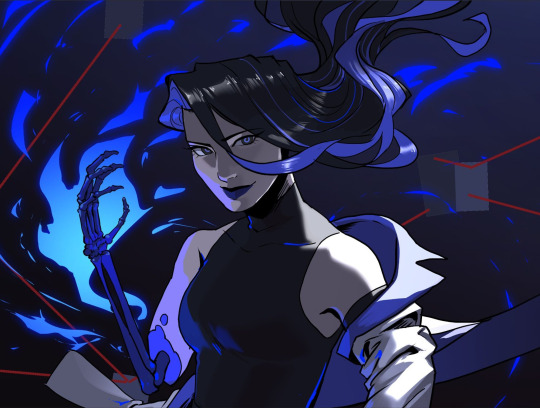
3. Sunset Phoenix, by NeverDraws. Immortal crime bosses manipulate their world with magic, and can reconstruct themselves after taking fatal blows - most of the time. When one of them is murdered, all hell may break loose. It’s so freaking stylish - I am WEAK for Val’s design.
151 notes
·
View notes
Text

Among the 70 Best Alt-Country Albums of All Time per Paste magazine are Hurray for the Riff Raff’s LIFE ON EARTH, Yola’s Walk Through Fire, Rhiannon Giddens’ Freedom Highway, k.d. lang’s Ingénue, Billy Bragg & Wilco's Mermaid Avenue, Carolina Chocolate Drops' Genuine Negro Jig, Emmylou Harris’s Wrecking Ball, and Wilco's Being There. You can see the full list here.
#alt-country#paste magazine#hurray for the riff raff#yola#rhiannon giddens#k.d. lang#billy bragg#wilco#carolina chocolate drops#genuine negro jig#emmylou harris#nonesuch#nonesuch records#americana music
57 notes
·
View notes
Text

Victor Vasko (on the right, in case you couldn't tell) is a mafioso and a war hero and a mechanics and a bartender and a cat and he got kneecapped by a friend (well with friends like that you don't need ennemies) so he's got two bad knees and a blind eye.
Bridget, on the left, has ehlers-danlos syndrome and is shooting clones of herself on sight in an old west-inspired creepy town in the middle of nowhere, trying to find the original, non-clone fiancé she came with in order to be able to leave the town.
63 notes
·
View notes
Text


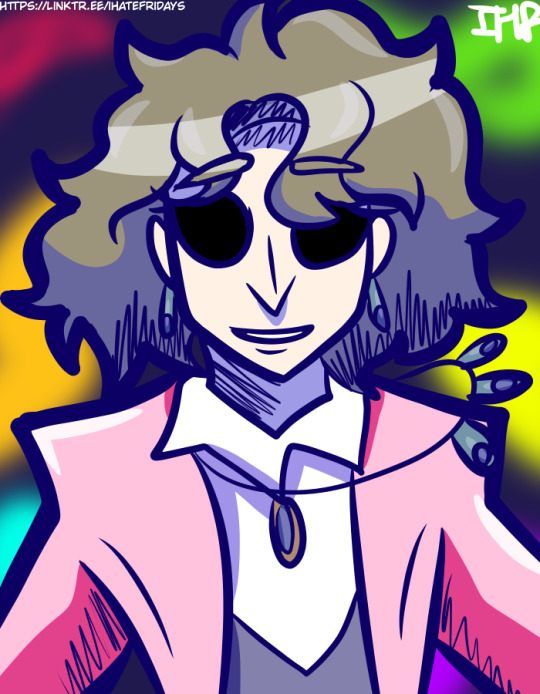

Some webtoon fanarts I made recently
20 notes
·
View notes
Text


Propaganda:
Bridget: she's got Ehlers-Danlos Syndrome so she's motor-disabled and she has to fight a whole frontier town full of clones of her fiancé and herself in order to find her fiancé et leave the town. Which you can only leave with the people you can in with. And of course if either of them are killed before they leave... the other can't leave.
#polls#best thriller horror girls#best thriller horror girls tournament#wait until dark#nonesuch#webtoons
7 notes
·
View notes
Text
Mary Halvorson — Cloudward (Nonesuch)
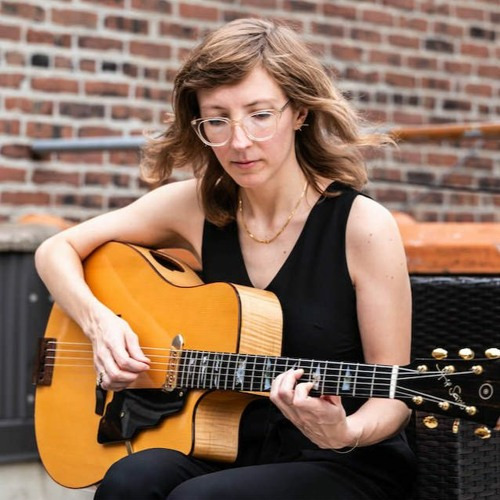
youtube
Guitarist Mary Halvorson has played with a number of artists, but for her past three albums she has worked with a band dubbed Amaryllis: Halvorson, Patricia Brennan (vibraphone), Nick Dunston (bass), Tomas Fujiwara (drums), Jacob Garchik (trombone), and Adam O’Farrill (trumpet). Over the course of their relatively brief tenure, they have cohered into a formidable ensemble, energetically collaborating with stalwart commitment to Halvorson’s compositions. There are eight of these on Cloudward, polystylistic vehicles for Amaryllis’ soloing.
Cloudward opens with “The Gate,” in which a brief theme in parallel voicings is supplanted by a series of solo turns, including incendiary ones from the brass. Brennan’s vibes continue the changes underneath, and the entire group reconvenes for a brief, smoldering coma. Halvorson plays a modal, looped intro to “The Tower,” which speeds up and then disappears. Next an undulating tune played by Brennan and underscored by Halvorson hovers diaphanously. After a time, terse brass interjections and a spider-web patterned bassline join. The texture is full yet never overly thickened. A vibes solo adds filigrees to the mix, soon augmented by Halvorson, moving from rhythm guitar to bending notes and unleashing terse imitations of the brass interjections. The brass players themselves begin to animate the proceedings with greater intensity in their repeated lines and with bends of their own. Suddenly, this ceases, the opening music returns, accompanied by oscillating brass duos. The tune closes in an echo of the intro with slow repeated notes in the guitar. A standout on the recording.
“Incarnadine” moves Amaryllis closer to free playing, with swooping guitar, trilling brass, pedaled vibraphone playing shimmering arpeggios, off-kilter drums, and angular arco bass. It is the rhythm section that takes its spotlight moment here, and the difference in playing approach is pleasantly surprising. Fujiwara also plays a rollicking intro to “Tailhead.” His polyrhythmic groove sets up two-against three lines and a syncopated tune in the brass. Garchik unleashes one of his best solos, eventually dueting with Halvorson while Brennan plays the original tune underneath. The intricacy of the structure of Halvorson’s music is particularly emphasized on “Tailhead.”
Halvorson is a generous collaborator, and most of the performances on Cloudward feel like a collaborative effort rather than a showcase for the leader. But on “Desiderata,” she lets it rip, playing a ranging, eventually looping, guitar solo that begins with a clean tone and secundal oscillations but climaxes with distortion and raucous glissandos. From free jazz to contemporary modern ensemble music, Halvorson has made thoughtful arrangements for Amaryllis. It’s great to hear her rock out too, playing with an abandon that has been simmering all along.
Christian Carey
#mary halvorson#cloudward#nonesuch#christian carey#albumreview#dusted magazine#guitar#jazz#amaryllis
6 notes
·
View notes
Text
youtube
Track of the day // Vagabon - Can I Talk My Shit?
From the album Sorry I Haven't Called, out September 15th on Nonesuch.
7 notes
·
View notes
Text


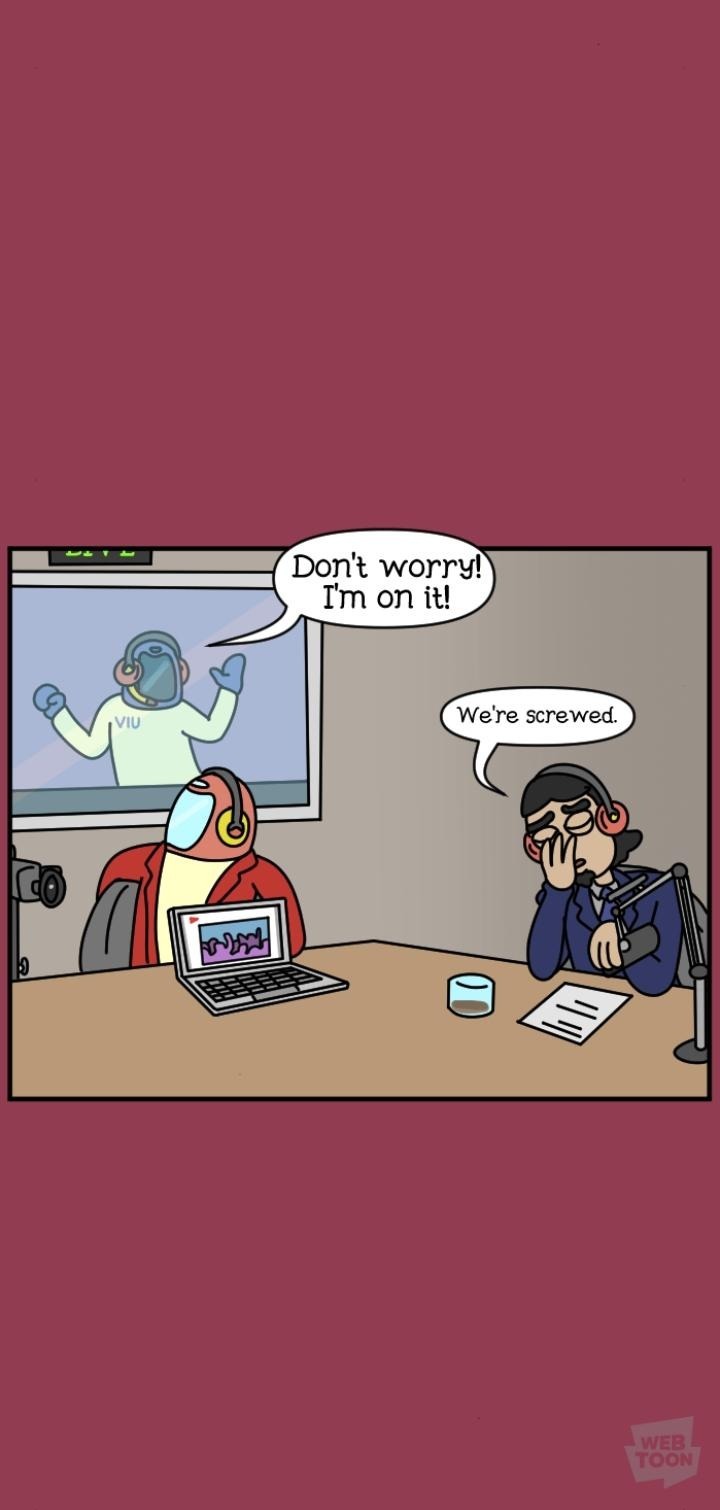
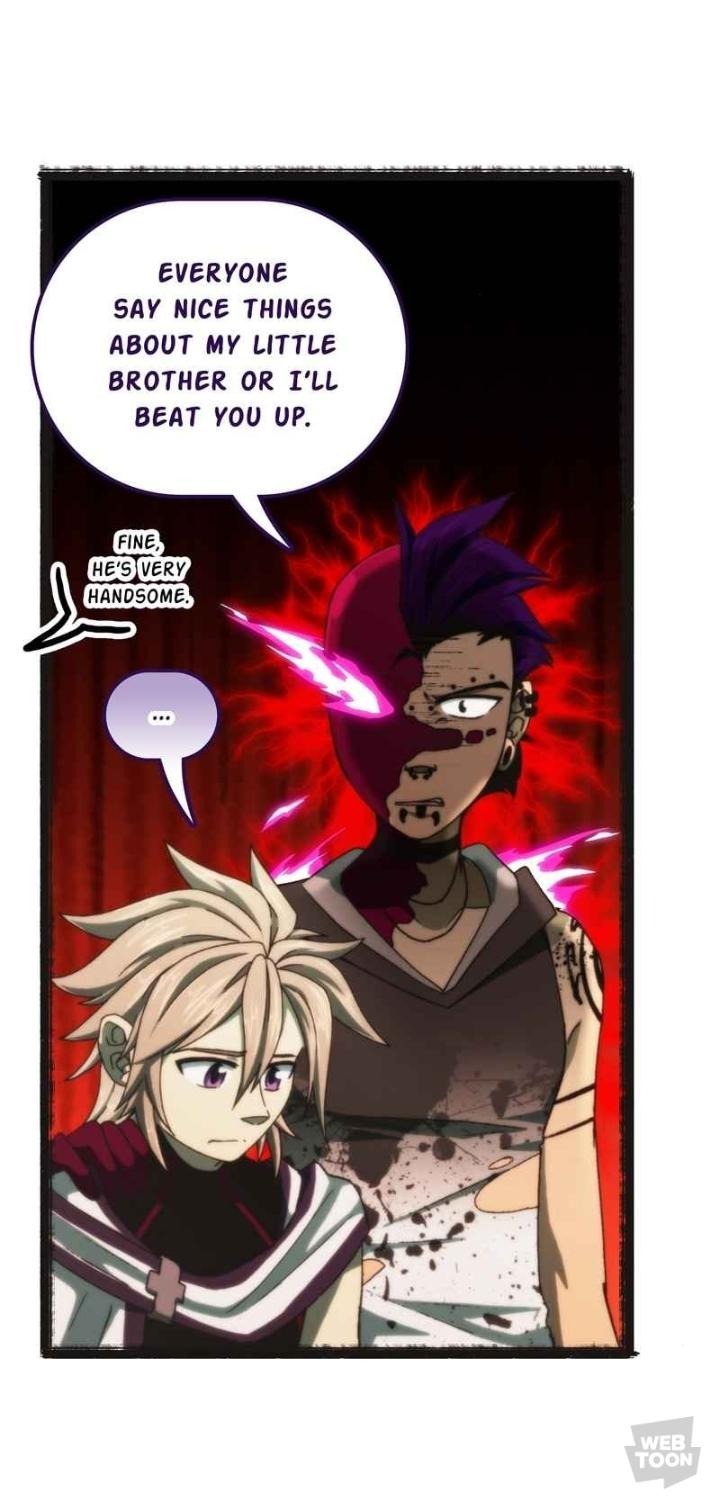
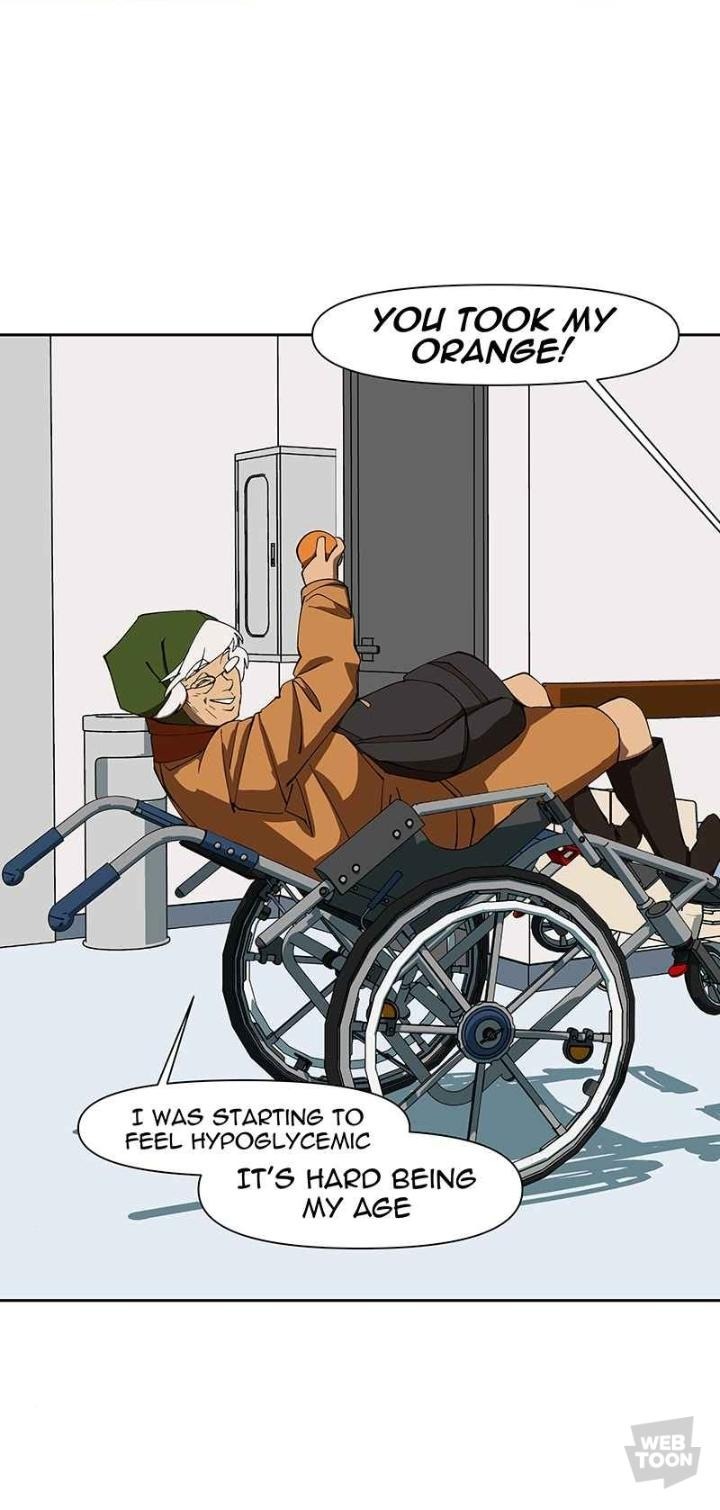
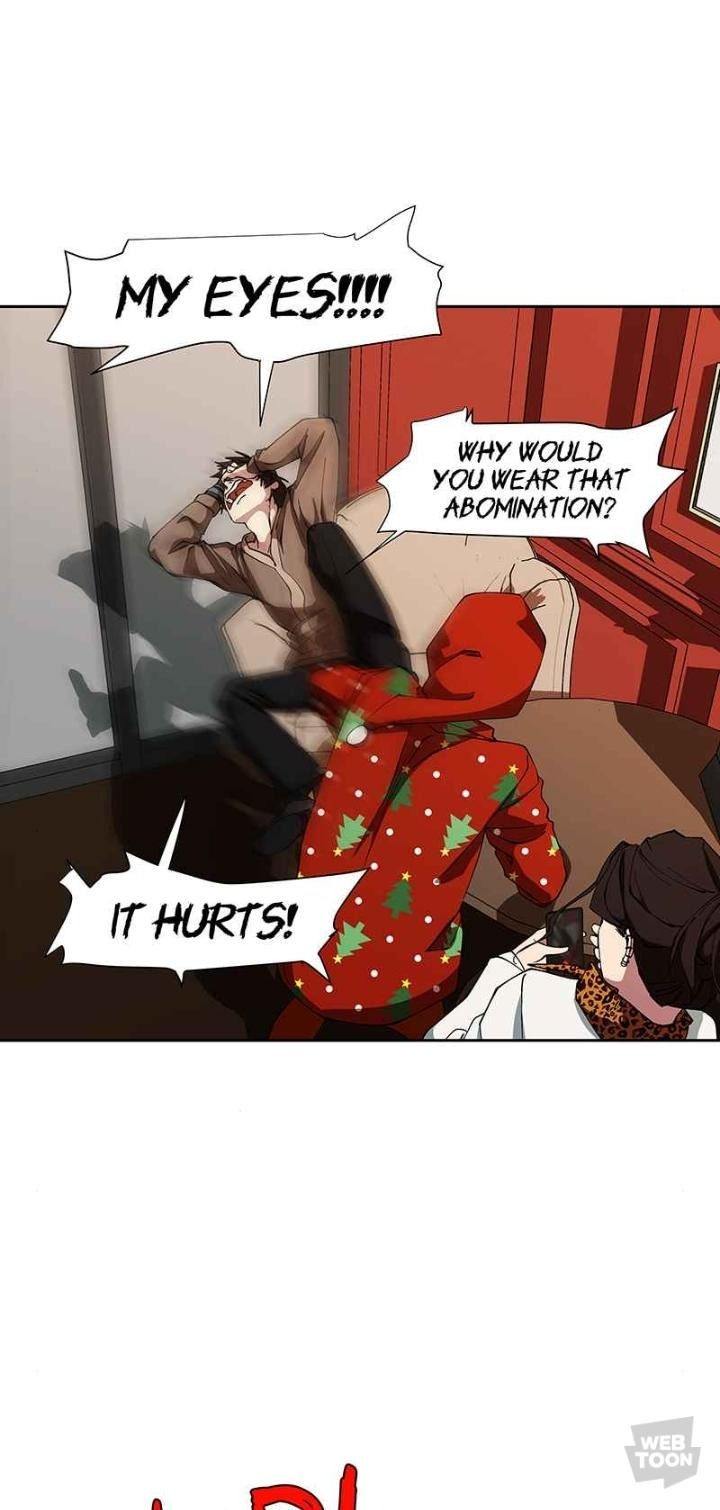
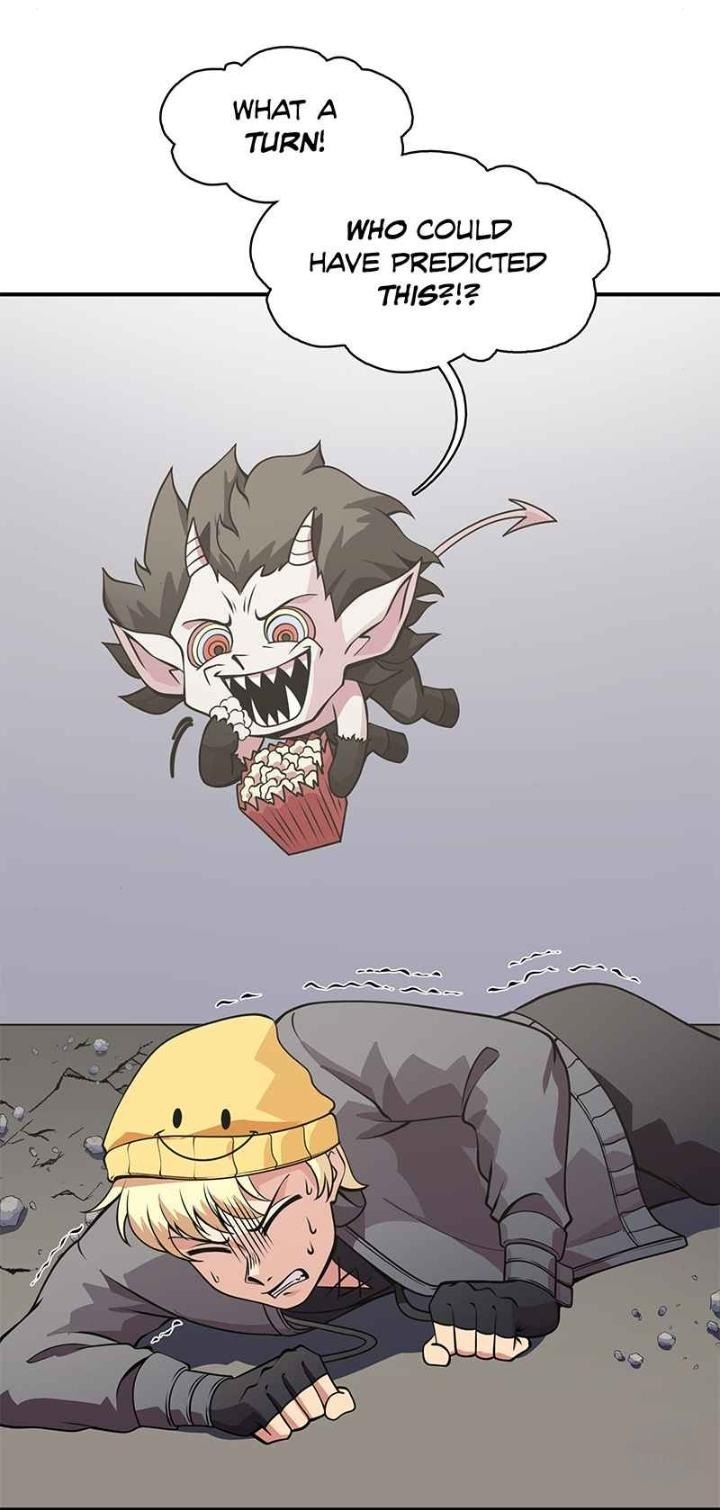


#extraordinary attorney woo#wt cat got your tongue#(twice)#city of blank#i love yoo#(twice too)#the iluvian cycle#(twice again)#nonesuch#out of context webtoons
2 notes
·
View notes
Text
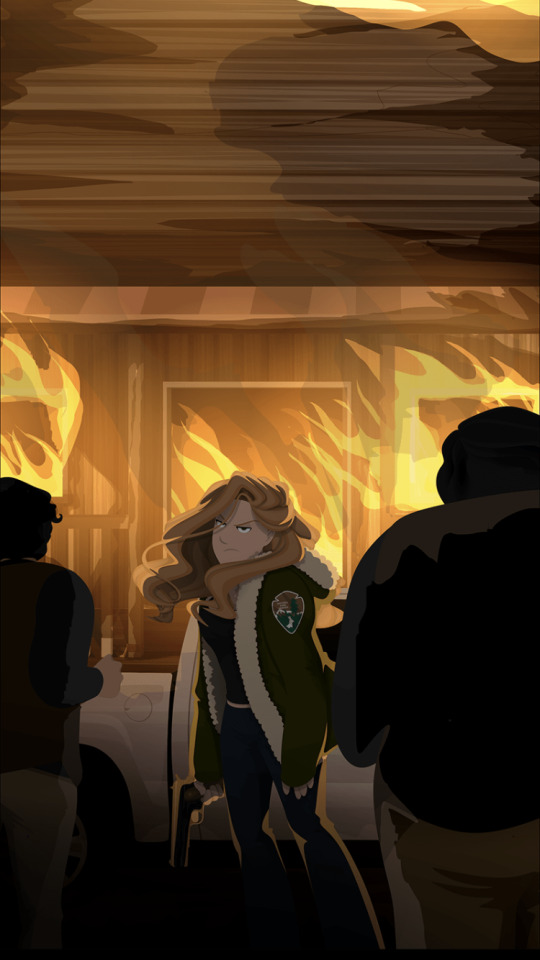
ALL MY TROUBLES IN A BURNING PILE
4 notes
·
View notes
Photo

Title: Nonesuch
Author: The Bitsy Artist
Canvas or Original: Original
Publication year: 2022
Genre: mystery
Blurb: Welcome to the town of Nonesuch. The rules are simple: you cannot escape unless you leave with the person you came in with. As Connor and Bridget discover, finding your partner is not so easy when there are dozens of copies of them wandering the old western grounds of Nonesuch...itching to become more and more like their hosts, questioning them and stalking them to learn more about who they are. Connor and Bridget may know each other, but they’re about to learn just how little they know about themselves.
7 notes
·
View notes
Text
Tom Skinner Interview: Vessels for Music to Be Heard
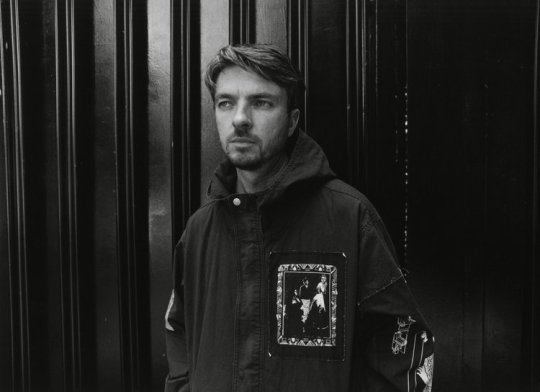
Photo by Alex Kurunis
BY JORDAN MAINZER
From the now-defunct jazz greats Sons of Kemet to best-ever Radiohead-adjacent project The Smile, Tom Skinner has not-so-quietly been one of the most versatile drummers of the past half-decade. Though he previously released his own music under the moniker Hello Skinny, earlier this month, Skinner shared his first album under his own name, Voices of Bishara (Brownswood/International Anthem/Nonesuch). The record doesn’t just exemplify Skinner as a player, but encapsulates his imaginative spirit as a listener and reinventor.
Throughout the COVID-19 lockdowns, Skinner listened repeatedly to Abdul Wadud’s 1978 solo album By Myself, privately pressed on Wadud’s label, Bishara. The Arabic name loosely translates to “the bringer of good news;” as lockdowns were lifted, vaccines administered, and live shows returned, it felt an appropriate word to reflect the genesis of what would become Voices of Bishara. A few years back, Skinner was invited to do a Played Twice session at London’s Brilliant Corners, wherein artists improvised in response to a classic album played through the venue’s audiophile system. That night, the album was Tony Williams’ Life Time; Skinner chose cellist Kareem Dayes, tenor saxophonists Nubya Garcia and Shabaka Hutchings, and bassist Tom Herbert. They had such natural chemistry that Skinner was inspired to write an album’s worth of new music, which he and the other four recorded live.
Voices of Bishara is far from a traditional jazz album, though, as Skinner returned to the recordings and edited between the instruments like his favorite disco and house producers would do. The result is an album with a tremendous sense of clearance, contrast, and opportunity for the individual players to shine. The muted, melancholy “Bishara” starts with just cello and bass before saxophone and rolling drums enter. “Red 2″, a response to Williams’ “Two Pieces Of One: Red” from Life Time, is shadowy, though Garcia’s flute shines through. Cello and chirping saxophone converse on “The Day After Tomorrow”, with Skinner’s drum rolls underneath the sighs of the woodwinds. “The Journey” and “Voices (Of The Past)” have a bit more of a groove and sway to them, Skinner’s drumming limber and snapping like a more traditional jazz or even boom bap beat. Voices of Bishara is more a retrospective of Skinner’s artistry and curatorial voice than a debut, let alone an assured mid-career album.
I emailed Skinner some questions about Voices of Bishara last month, touching on the album(s) that inspired it, responding to existing music, and composition. Read his responses below, edited for clarity.

Photo by André Baumecker
Since I Left You: Why do you think you found yourself listening to Abdul Wadud's By Myself during COVID so much? What about it resonates with you?
Tom Skinner: There’s a purity to the record. It’s a very direct and deeply personal piece of work. When you’re listening to it, it’s just you and him, no overdubs or studio trickery beyond the odd edit here and there. He’s talking directly to you, and I found that very refreshing and inspiring. In terms of the pandemic, looking back on it, I think maybe I took some solace in that level of intimacy at a time when we weren’t able to interact with other people as much as we were accustomed to. It’s also just a fucking cool record, and his playing on it is absolutely incredible. It’s loose and free with some pretty far-out improv on there but also incredibly melodic and rhythmically very interesting and groovy, too. Somehow, he manages to encompass all of my favorite things about music in one clear and concise statement.
SILY: What was your first experience or relationship with Tony Williams' Life Time?
TS: I’ve been a fan of Tony’s playing from the first time I heard him on the classic Miles Davis quintet records of the 1960’s. His own records from that time, though, always seemed a little more challenging and experimental. I first heard Spring (his second for Blue Note), and it definitely took me a while to appreciate what was going on, but as an aspiring young jazz musician, it was inspiring to hear how he was pushing himself and the music into new directions on those recordings. The thing I love about Life Time in particular is the unusual instrumentation and the fact that each track features a different combination of players. Tony doesn’t even play on the final tune. Even by today’s standards, that feels ahead of its time.
SILY: When playing for the Played Twice session and this album, why did you specifically choose Kareem, Nubya, Tom Herbert, and Shabaka?
TS: The personal connections and friendships between myself and the people I work with are at the heart of all my projects and collaborations, and this record is no exception. I have known everybody on the record for a long time, and we have a deep and rich history of performing together in different contexts. Getting this specific group together came at a time when we were all playing regularly at Brilliant Corners in various combinations, often for the Played Twice sessions. What attracted me to this particular combination of personalities and players was the scope for orchestration that it presented: Kareem’s cello and Tom’s double bass is a small string section, and Shabaka and Nubya’s tenor saxophones are the wind section, with the added possibility of them doubling on either clarinets or flutes, respectively, and then me on percussion. I also wanted to allow the musicians as much space and freedom as possible within the framework of the songs and, although there are “featured” players on certain tracks, the music was written with a collective and egalitarian approach to improvisation in mind.
SILY: "Red 2" is about a quarter of the length of "Two Pieces of One: Red" and a bit more shadowy in spirit. How did you go about coming up with your version of it, and how did you approach the differences with the original?
TS: I wasn’t approaching it with the original piece in mind at all, and I definitely didn’t want to recreate what had already been done. I wouldn’t really call it a cover, either. With our "version" of “Two Pieces of One: Red”, I wanted to try to break it down to its base elements and focus on only a very small section of the original piece, almost like a sample or a loop that you might find on a hip-hop record. In that sense, the repetition of it becomes a compositional device, too. We then used this as a jumping off point for improvisation. In addition to this idea, I wanted to play around with the sound of the recording, using hard edits between the different instruments and microphones to accentuate an almost jarring sense of space and perspective in the music.
SILY: "Voices (Of The Past)" certainly has a more retro jazz feel to it, and the drums could almost be a part of a boom bap 90's hip hop song. What voices of the past were you referencing on this track?
TS: That’s a very good question and, if I’m honest, I’m not sure I really know. Perhaps I was referencing the music I grew up listening to? Specifically a steady diet of early 90’s hip hop during my teen-age years. That’s when I got heavily into jazz, too: Miles, Coltrane, Ornette, Monk, all the classics. When you’re young, you learn very quickly and soak up so much information. All that music is digested and becomes part of your DNA. So, in a way, I feel that, subconsciously, all those things are probably filtering through.
On a deeper level, though, as musicians, when we play, we are channeling the spirits of our ancestors and forefathers. The music exists all around us, and we are vessels for it to be heard.
SILY: "Quiet As It's Kept" is the most stark track on here, comparatively speaking. How important is it for you to use empty space in your compositions?
TS: Extremely important. Silence, a rest, or a pause are as important, if not more important, than any note that’s written or played. I’m trying to tap into that more and more with my approach to playing the drums and compositionally, too. Space is the place.
SILY: Why did you decide to release this album under your name as opposed to Hello Skinny?
TS: Initially it wasn’t the plan to release it under my own name. I was just going to call it Voices of Bishara. But, for various reasons, it made more sense to release it as Tom Skinner. At first, I wasn’t keen on the idea. I’m used to hiding behind another name--like Hello Skinny or whatever--and stepping out like that felt a bit daunting. But gradually, I came around to the idea and soon came to realize that releasing music under my own name actually gives me a lot more artistic freedom. This way, I’m not tied to any particular sound, style, or group. From one release to the next, I can essentially do what I want. That feels very liberating for me going forward.
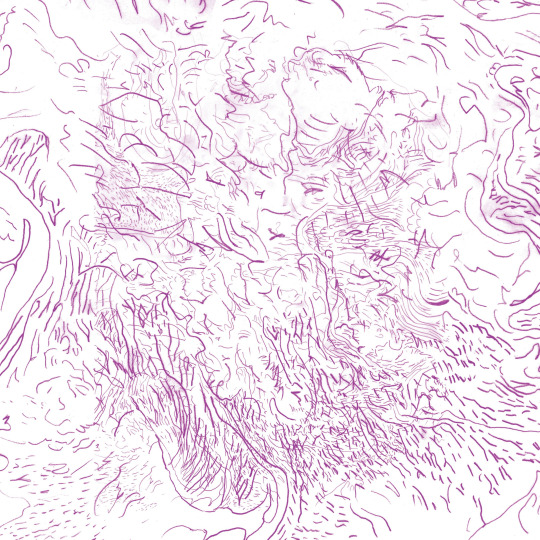
SILY: What's the story behind the album art?
TS: The album artwork and design are by the supremely talented Paul Camo. We’ve known each other for many years but only started working on projects together quite recently. This is the second sleeve he’s designed for one of my projects, the first being the Okumu, Herbert, Skinner Trio album Undone: Live at The Crypt released via Vinyl Factory in 2019.
I didn’t give Paul any specific direction; rather, I was more interested in him having complete freedom, to see how he reacted to the music creatively and allowing that to dictate the direction we took. Talking regularly with him and throwing ideas around was a very important part of the process as a whole in creating this record, and I feel like the artwork informs the music as much as vice versa, to the point where he’s now become a part of the group! Paul is a fantastic DJ and selector with a vast knowledge of all music but with a keen ear for deep jazz and improvised music. He performed with us on CDJs and samples at Church of Sound back in September. He has a regular show on NTS called We Are… which is well worth checking out. In addition to that, he runs Margate Radio (Margate is a town on the Kent coast where he is based) and is very active in the local music and art scene there.
SILY: Are you playing these songs live?
TS: We played one show in London at Church of Sound in September, and hopefully, we’ll get a chance to play some more shows next year. There are some potential opportunities on the horizon.
SILY: What's next for you?
TS: A tour across the US with The Smile that will take us right up to Christmas. I’ve started writing material for a second Bishara record. Plus, there are a few other album projects and collaborations in the works.
SILY: What have you been listening to, reading, and watching lately?
TS: Music (in no particular order): Sam Gendel, Armand Hammer, billy woods, Elucid, Low, Ingram Marshall, Robert Stillman, Loraine James, Joe Lovano’s Trio Tapestry, Julius Hemphill, Earl Sweatshirt, Coby Sey, Mica Levi, Moin, Aaron Dilloway, Lucrecia Dalt, Ohbliv, Jaimie Branch, keiyaA, Henry Threadgill, Tara Clerkin Trio, Charles Stepney, Rotary Connection, Jeanne Lee, The Beatles, Broadcast… I could go on, but we’d be here all day.
Books: The History of Bones by John Lurie and The Passengers by Will Ashon.
Film: The Hand of God by Paolo Sorrentino.
youtube
#tom skinner#interviews#brownswood#international anthem#nonesuch#brilliant corners#shabaka hutchings#voices of bishara#alex kurunis#sons of kemet#the smile#hello skinny#brownswood recordings#nonesuch records#abdul wadud#by myself#played twice#tony williams#life time#nubya garcia#kareem dayes#tom herbert#André Baumecker#bishara#miles davis#spring#blue note#john coltrane#ornette coleman#thelonious monk
5 notes
·
View notes
Text

"As hypnotic as anything she’s written, 'Dawning' is a revelation," Rob Thormeyer says of the new song from guitarist/composer Yasmin Williams, his guest on the latest episode of his For Songs podcast. "It signals a re-awakening of life after a catastrophic pandemic, new love, hope, and, well, pretty much whatever you want." The track—featuring Aoife O'Donovan on vocals, Kafari on rhythm bones, and Nic Gareiss’ percussive dancing—provides an early peek at her Nonesuch debut album, due in 2024. You can hear their conversation here.
#yasmin williams#dawning#for songs#aoife o'donovan#kafari#nic gareiss#guitar#nonesuch#nonesuch records
14 notes
·
View notes
Text

Sapphia, on the right, is a gay princess with a mechanical leg. If I get it right, she's supposed to marry a prince but again, she's gay, so she gets into a fake relationship with a gay prince so they both are left alone by their parents.
Bridget, on the left, has ehlers-danlos syndrome and is shooting clones of herself on sight in an old west-inspired creepy town in the middle of nowhere, trying to find the original, non-clone fiancé she came with in order to be able to leave the town.
#high class homos#nonesuch#webtoons#disability representation#ehlers danlos syndrome#tournament poll
35 notes
·
View notes
Text

This is easily the most terrifying panel in this entire comic
3 notes
·
View notes
Note
if you like horror, i think you'd like the nonesuch comic on webtoon
Ehhhhxcellent, I’ll check it out!
3 notes
·
View notes
Text
Taj Mahal and Ry Cooder — Get on Board (Nonesuch)

youtube
If you live long enough, time has a way of snapping back at you, bringing your current, vastly inferior self into sync, at least temporarily, with the people you know, the places you went, the things you did as a much younger person. That seems to have happened for Taj Mahal and Ry Cooder, who first performed together in 1965 as the Rising Sons. They were good enough to get a record contract from Columbia but the sessions they produced together in the 1960s were never officially released. Cooder played on Taj Mahal’s first album, released in 1968, and then the two went their separate ways.
Cooder carved out a blues slide guitar path that led through rock and country, from roots authenticity to chart-topping accommodation and even, memorably, to post-revolutionary Cuba. Taj Mahal lived and played and studied the blues, collaborated with the Rolling Stones and Keb Mo and Toumani Diabaté, (among others) and was an early experimenter with the music of other cultures. Both have been widely lauded, Cooder placed of Rolling Stones’ “100 Greatest Guitarists of All Time” in 2003; Taj Mahal has won three Grammys. But after the debut Taj Mahal solo album, the two never recorded together again…until now.
The two joined together on Get on Board to play the music of Piedmont bluesmen Sonny Terry and Brownie McGhee, two artists celebrated in the 1960s folk revival, who both Cooder and Mahal saw perform as young teenagers. Their Piedmont style of blues incorporated a broad array of influences, not just the African rhythms and field chants of the deep south, but styles like boogie-woogie, jazz and folk. The idea was for Cooder and Mahal to recreate their music with Mahal singing, playing guitar, harmonic and piano and Cooder adding guitar, mandolin and banjo. Cooder’s son Joachim played bass and drums.
The disc shares a name, three songs and a cover art aesthetic with Get on Board: Negro Folksongs by the Folkmasters, the 1952 compilation that introduced Terry and McGhee to the wider public. That disc’s original “Midnight Special” lays its rough, shuffling rhythms down in staccato guitar and terse blurts of harmonica. Cooder and Taj Mahal capture the song’s insouciant charm, with Cooder strumming guitar and singing a home-y lead and Mahal blowing raspy fills of harmonica. Cooder switches to mandolin for “Hooray Hooray,” sketching trebly figures around the pair’s voices in unison, and Mahal again retraces Terry’s harmonica work with jaunty, enflamed precision. Joachim Cooder’s percussion is spare and sharp—he is maybe playing a box here, certainly not a traditional drum kit.
These songs run the bluesman’s gamut from the sacred to profane, the piano-led “Deep Sea Diver” slouches heavy with sexual innuendos, while gorgeous, prayerful “I Shall Not Be Moved” partakes of gospel pieties. There are field songs (“Pick a Bale of Cotton”), eating songs (“Cornbread, Peas, Black Molasses”) and drinking songs (“Drinkin’ Wine Spo-Dee-O-Dee”), all proceeding with a shuffling, sliding, percussive motion, the two principals switching off on vocals and passing the guitar as the mood takes them. You could spend a lot of time thinking about why these songs and what Terry and McGhee meant in their own time and what they mean now, but the songs are pure visceral experiences that you feel in your gut and your heart.
Jennifer Kelly
#ry cooder#taj mahal#get on board#nonesuch#jennifer kelly#albumreview#dusted magazine#blues#folk#son terry#brownie mcghee
38 notes
·
View notes